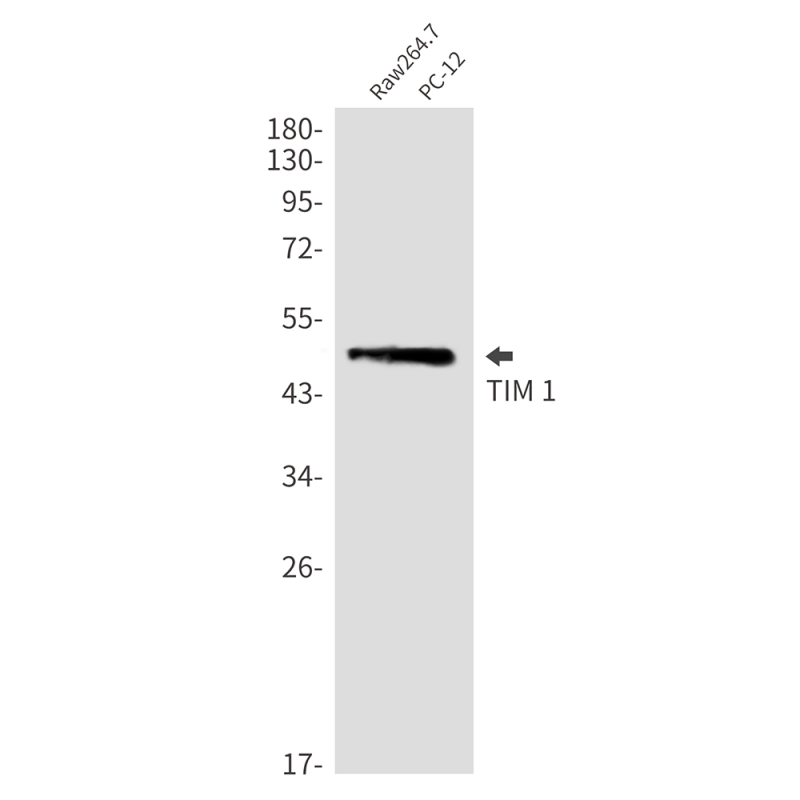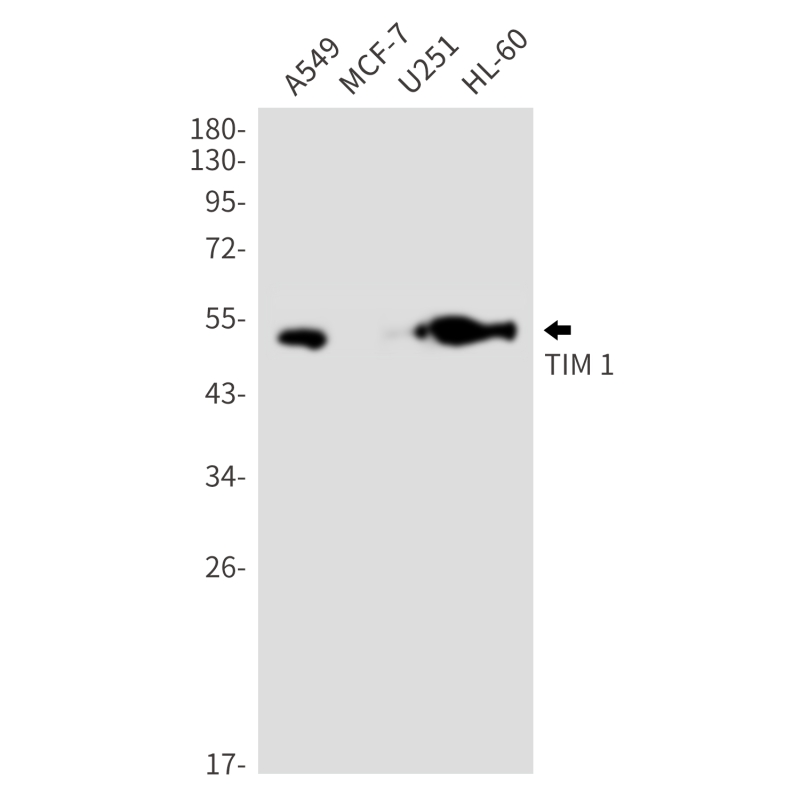

| WB | 1/500-1/1000 | Human,Mouse,Rat |
| IF | 咨询技术 | Human,Mouse,Rat |
| IHC | 咨询技术 | Human,Mouse,Rat |
| ICC | 技术咨询 | Human,Mouse,Rat |
| FCM | 咨询技术 | Human,Mouse,Rat |
| Elisa | 咨询技术 | Human,Mouse,Rat |
| Aliases | CD365; HAVCR 1; HAVCR; Havcr1; KIM 1; TIM; TIM1; TIMD1 |
| Entrez GeneID | 26762 |
| WB Predicted band size | Calculated MW: 39 kDa; Observed MW: 50 kDa |
| Host/Isotype | Rabbit IgG |
| Antibody Type | Primary antibody |
| Storage | Store at 4°C short term. Aliquot and store at -20°C long term. Avoid freeze/thaw cycles. |
| Species Reactivity | Human,Mouse,Rat |
| Immunogen | A synthetic peptide of human TIM 1 |
| Formulation | Purified antibody in TBS with 0.05% sodium azide,0.05%BSA and 50% glycerol. |
+ +
以下是3篇关于HAVCR1(TIM-3)抗体的假设性文献示例(非真实文献,仅供格式参考):
1. **文献名称**: "TIM-3 blockade enhances anti-tumor immunity by relieving T-cell exhaustion"
**作者**: Anderson, A.C. et al.
**摘要**: 研究证明HAVCR1(TIM-3)抗体通过阻断其与配体Galectin-9的结合,逆转T细胞耗竭,增强肿瘤微环境中CD8+ T细胞的抗肿瘤活性,为癌症免疫治疗提供新策略。
2. **文献名称**: "Structural basis of HAVCR1 recognition by therapeutic antibodies"
**作者**: Zhang, Y. et al.
**摘要**: 通过冷冻电镜解析HAVCR1与两种临床抗体复合物的三维结构,揭示抗体结合表位及抑制病毒入侵的分子机制,为优化抗体药物设计提供依据。
3. **文献名称**: "HAVCR1-targeted antibody alleviates autoimmune hepatitis in murine models"
**作者**: Smith, J.R. et al.
**摘要**: 实验表明HAVCR1抗体通过调节Th1/Th17细胞平衡,降低肝脏炎症因子水平,显著改善小鼠自身免疫性肝炎症状,提示其治疗自身免疫疾病的潜力。
注:以上文献为示例,实际文献需通过PubMed/Google Scholar检索关键词(如HAVCR1 antibody, TIM-3 blockade)获取。
The Hepatitis A Virus Cellular Receptor 1 (HAVCR1), also known as TIM-1 (T-cell immunoglobulin and mucin domain-containing protein 1), is a type I transmembrane protein expressed on epithelial cells, lymphocytes, and antigen-presenting cells. It serves as a receptor for hepatitis A virus (HAV) entry and plays roles in immune regulation, including modulating T-cell activation, cytokine production, and apoptotic cell clearance (efferocytosis). Structurally, HAVCR1 contains an immunoglobulin variable (IgV) domain and a mucin-like domain, which mediate ligand interactions and signaling.
Antibodies targeting HAVCR1 are critical tools for studying its biological functions and therapeutic potential. Research highlights its involvement in allergic responses, autoimmune diseases, and viral infections, as well as its dual role in promoting or suppressing inflammation depending on context. In cancer, HAVCR1 has been implicated in tumor immunity, with some studies suggesting its overexpression correlates with poor prognosis.
HAVCR1-specific antibodies (monoclonal or polyclonal) enable detection of its expression in tissues, investigation of ligand-receptor interactions, and exploration of therapeutic strategies, such as blocking viral entry or modulating immune responses. Challenges include understanding its complex signaling pathways and context-dependent roles. Recent studies also explore HAVCR1 as a biomarker for kidney injury or immune-related conditions. These antibodies hold promise for developing targeted therapies against HAV-related diseases, autoimmune disorders, and cancers, though further mechanistic insights are needed.
×